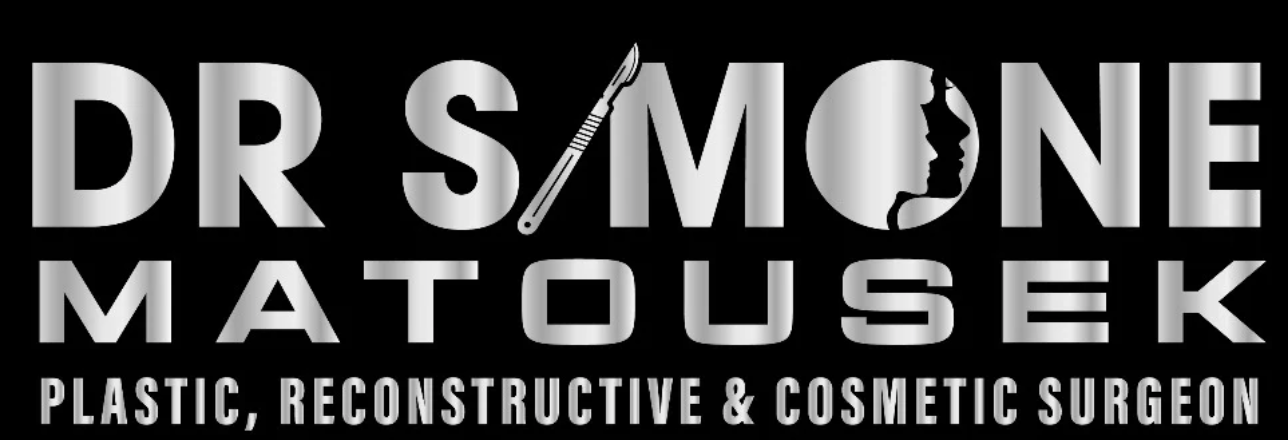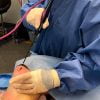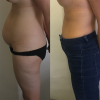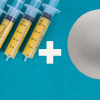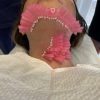
A breast reduction is a way of decreasing the size of the breast by removing excess glandular tissue, fat and skin and rearranging the remaining tissues to create a more aesthetic breast shape.
Very large breasts can create symptoms of back, neck and shoulder pain and causes rashes under the breasts which can be relieved with breast reduction surgery.
Patients presenting for breast reduction are best to be a stable and normal weight range when presenting for breast reduction surgery.
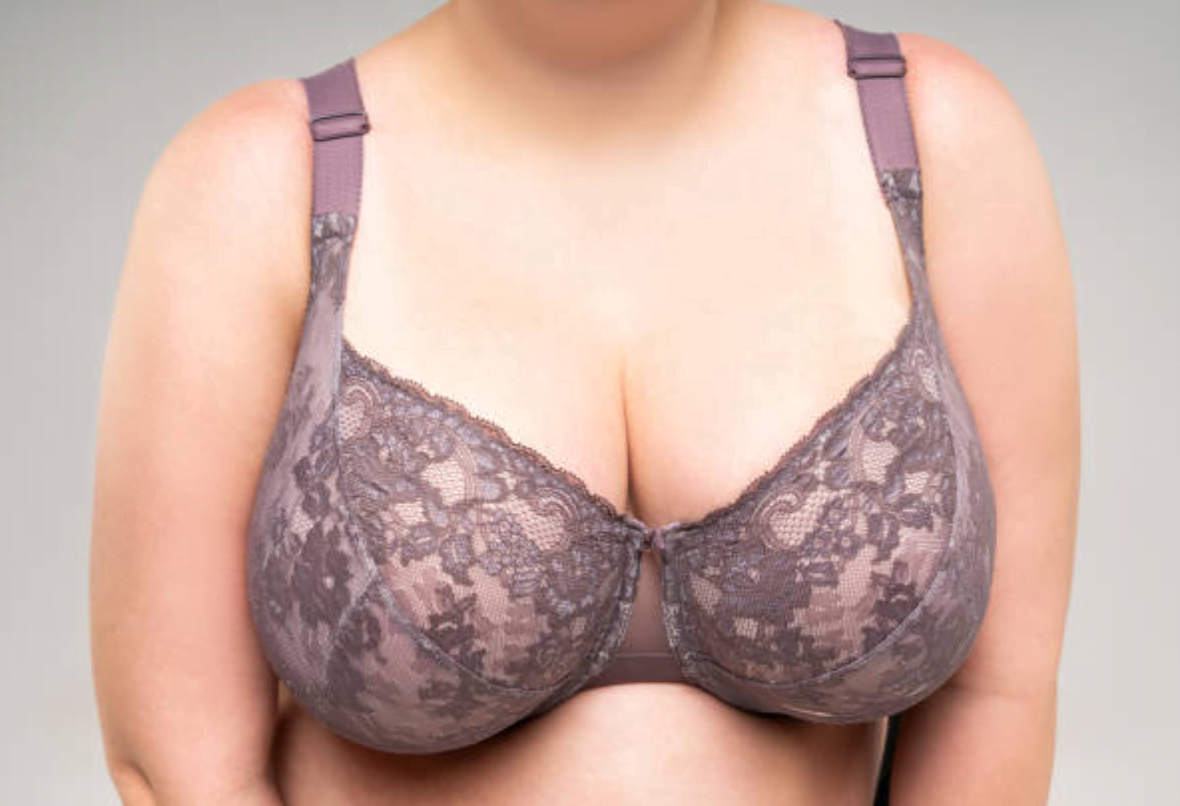
Breast reduction can not only relieve symptoms of back and neck pain caused by heavy breasts, but also creates a nicer breast shape and lifts the breasts.
Dr Simone does a vertical scar breast reduction with a shorter horizontal scar
How long the horizontal scar needs to be depends on how much skin excess there is and how good the skin quality is. In some patients, this can be very short and does not need to extend close to the midline or around the sides.
Makes the breasts more symmetrical
Differences in volume, nipple-areolar complex height and size are corrected during the procedure.
Lipocontouring around the sides of the breast is part of the breast reduction procedure in order to create a more aesthetic shape
This gives a better definition to the outer breast crease which can often blend into the armpit and side or 'lateral roll' area
Rarely almost scarless breast reduction can be performed if the tissue is suitable for liposuction
There has to be good skin quality with no breast ptosis and a large fat component to the breast. If the breast is mainly formed of glandular tissue, it will not work.
Breast reduction
Most frequently asked questions.
What does breast reduction surgery involve and who is suitable for the procedure?
Who is a suitable for breast reduction surgery?
Very large breasts can cause significant neck and back pain and impede the ability to exercise due to the weight of the breasts. Rashes under the breast crease can also occur, particular in the warmer months.
Large breasts cause the skin and breast ligaments to become stretched over time leading to loose skin and a breast ptosis where the nipple-areolar complex descends.
Large breasts and the discomfort can affect women of all ages. Breast reduction can relieve symptoms as well as significantly improve the breast shape.
What are the types of breast reduction available?
There are many different approaches to breast reduction.
Breast reduction pedicles
The nipple-areolar complex is kept alive on what is called a pedicle which is a leash of fat and glandular tissue that remains connected to this blood supply. Dr Simone mainly uses a superomedial pedicle which redistributes the remaining tissue to the upper, inner breast. This approach removes most of the tissue the tissue from the outer breast and armpit area where it is least desirable.
Short scar breast reduction
Dr Simone does a short scar breast reduction where possible. All patients have a scar around the nipple-areolar complex and a vertical scar from there to the breast crease. The length of the horizontal scar under the breast crease can vary. Certain patients will not be suitable for a very short horizontal scar due to significant skin excess and poor skin quality. These two factors determine the length of the scar.
Breast reduction with liposuction
This is uncommonly successful but can work in some patients.
There must be a large fat component to the breast. If the breasts have dense glandular tissue it will not work.
There must be good skin quality or liposuction alone will worsen the loose skin.
The nipple-areolar complex must be in a good position. If it sits too low, liposuction will only worsen the overall appearance of the breast.
Breast reduction and scarring
What will the scars be like after a breast reduction?
Breast reduction always involves scarring and how it eventually fades does depend on the individual’s skin quality and genetic predisposition to scarring.
It is normal in some skin types to have very pink scars for some time after surgery (6 months or longer). These will eventually fade but may take time and extra measures such as silicon gel sheeting.
The main scar that remains visible for some time is from the nipple to the breast crease or the vertical scar as it. is on the front of the breast. It can stretch over time (such as the vertical scar) and due the remaining weight of the breast.
The scar around the nipple has the potential to fade very well and blend very well with the nipple-areolar complex and become almost imperceptible.
The horizontal scar is usually well hidden in the breast crease.
What can be done to improve the scars after breast reduction?
It is important to be patient with the settling of scars. They do get better in the vast majority with time and scar treatments.
Whilst surgical skill is important in determining scarring to some extent, genetic factors play an even bigger role. Certain skin types may form lumpy and quite pink scars known as hypertrophic scars. When really prominent these are keloid scars and can get bigger with time. These can be managed with appropriate scar therapy. If there is a family history of poor scarring, this does increase a person’s chances of this.
All patients are given scar management advice and if a prominent scar begins to form in the post-operative period, further scar management measures are instituted. These can include silicon gel sheeting or lasers.
Scars revisions can be performed after one year and can sometimes improve the scars in some.
How long will a breast reduction last?
How long does breast reduction surgery last?
Provided a stable weight is maintained, it is not common for the breasts to significantly enlarge again.
Weight gain and pregnancies can obviously affect the results and require revision surgery.
In rare cases of macromastia that is severe (particularly in very young patients), it can recur.
The breasts do drop over time; how much and how quickly this occurs depends on individual patient factors such as genetics, the state of the breast tissues and the stability of weight post surgery. If weight loss occurs, the skin can look loose and can be tightened with a revision procedure which is less extensive than the original surgery.
Can I go braless after breast reduction surgery?
Whilst you may love the new look of your breasts post breast reduction, it is not recommended you remain braless for long periods.
As gravity continues to play a role from day one post surgery, wearing of bras is normal to maintain the breast results.
The breasts are only held in position by internal stitches. Whilst these are strong, the effects of gravity over time are stronger! Consistent bra wearing in the post-operative period will ensure that your breast scars down in a good position.
Breast and nipple sensation after breast reduction surgery
Is there loss of sensation after breast reduction?
Many patients with large breasts report poor sensation before surgery in any case due to the stretching of the tissues over time.
With removal of breast tissue, it is possible that parts of the breast tissue and even the nipple areolar complex will experience permanently reduced sensation.
Reduced sensation in the post-operative period is completely normal and in some there may be hypersensitivity.
Much of this does recover in the months following surgery. By 3-6 months much of the sensation will have improved and full recovery takes one year.
Breast reduction surgery
Ideal weight and breast reduction surgery
Being in a healthy range BMI is important for achieving the best breast reduction results.
Some patients may be unable to reach their target weight before surgery as sometimes the breasts are so heavy that vigorous exercise is not possible. Whilst Dr Simone realises that it may not be possible for some to achieve their ideal weight before their breasts are reduced, even a few kilos of weight loss if possible improves results and reduces the amount of liposuction that can be done.
So long as a patient is willing to accept the drawbacks of not being in an ideal BMI range, the surgery can be performed with some increased risks to improve function in some circumstances. It is important to note that studies suggest the surgery is not recommended if you are in the obese and morbidly obese category of BMI. There are increased risks of fat necrosis (which can lead to pain and infection) and anaesthetic risks.
In these situations, Dr Simone will give you an achievable weight loss plan and some goals for this before surgery. Many patients have been able to do this successfully.
Remember, if you are asked to lose weight before surgery, there is no offence meant at all. Many people struggle with increased body weight, especially during these times of recurrent lockdowns and reduced activity. The advice is given to ensure you get the best possible breast reduction results, minimise your time on the operating table, risks and the need for revision surgery.
Do I need a general anesthetic for a breast reduction?
This is a procedure that needs to be performed under general anaesthesia in an accredited hospital facility.
Even in those that are suitable for liposuction only breast reduction, it is simply too uncomfortable and dangerous under local anaesthetic with sedation.
How long does a breast reduction surgery take?
The procedure depends on the size of the breasts and how much extra liposuction is required, however, around three and a half to four hours.
Symmetrising the breasts if there is significant difference is size and shape of the breasts and nipple-areolar complex takes time.
Dr Simone will sit you up during surgery and take precise measurements to get the breasts as symmetrical as possible.
What is the pain like after a breast reduction?
Suprisingly, significant pain is not common after breast reduction surgery. Many patients experience immediate relief of their chronic back and neck pain.
Patients are up and walking the day after surgery. A minimum of an overnight stay is required for most patients.
The length of hospital stay does depend on how long the drains need to stay in (not every patient requires drains). Some patients will be comfortable managing their own drains at home and this can be arranged.
Dr Simone Matousek works in conjunction with an anaesthetist who is focused on ensuring your post-operative pain is well controlled and minimal. Long acting local anaesthetics are injected into the breast at the time of operation which provides good pain control. It is important for you to take regular pain relief following surgery.
What will the breasts look like after breast reduction surgery?
There will be bruising and swelling of the breasts which can take 2-3 weeks to completely resolve. Bruising around the sides from liposuction can be significant straight after surgery.
The breasts will sit unnaturally high after surgery and drop over the coming months. This is to give them a head start as gravity is present from day one! All breasts following this surgery will drop over time. The rate at which this occurs depends on individual factors such as skin quality, weight fluctuations and pregnancies.
As well, there can be some puckering of the scars which does settle over the coming months (this is to tuck in excess skin and shorten the vertical scar). It is a normal side effect of the technique in order to ensure the shortest scars possible.
There will only be waterproof dressings on the breasts over the nipples and scar line. Brief showering is permitted over these once drains have been removed (if they have been used). These remain intact until the time of your wound review at around 10 days.
Recovery time after breast reduction
When can I return to work after a breast reduction?
Patients can be back to a desk job within a few days, depending on the size of the breast reduction and if drains have been used and removed.
Taking regular pain relief can help an early return to work and activities.
Anything requiring significant lifting or physical activity will require around one month off.
What do I need to do during the recovery phase of breast reduction?
A firm bra needs to be worn day and night for six weeks. It is not recommended to ever go permanently braless after this as it can lead to faster deterioration of the results.
Taping the scars with Micropore is recommended for at least 3 months. This is a simple measure to support the scars and prevent stretching. Extra scar management can be instituted if necessary.
Underwire bras should be avoided for at least 2 months to ensure adequate wound healing.
Weight gain or weight loss after surgery will impact the results. It is important to keep the weight as stable as possible after surgery.
What are the exercise restrictions after breast reduction?
Many patients are excited by their new breast reduction results. With less weight on the chest, many can finally exercise normally for the first time in their lives.
The wounds should be completely healed at around 3 weeks.
Gentle exercise can be commenced at this time. More aggressive upper body stretching should be avoided for 4-6 weeks, however lower body exercise is permissible. It is important to wear supportive sports bras during the recovery period.
Breast reduction health fund and Medicare rebates
Is breast reduction covered by my health fund or Medicare?
There are certain criteria that need to be present for breast reduction surgery outlined below.
Unfortunately, Dr Simone has experienced patients that have been to other practioners and told they qualify for item numbers which involve some rule bending (ie calling a breast lift a breast reduction). As outlined in the criteria below, the breasts need to be of a significant size to cause neck or shoulder pain to qualify for the item number.
As well, it is a patient’s responsibility to check their level of insurance coverage by calling the insurer and quoting these item numbers. This type of surgery typically requires a higher level of cover than other surgeries.
The Medicare item number for a breast reduction to both sides (45523) has the following criteria.
Reduction mammaplasty (bilateral) with surgical repositioning of the nipple:
(a) for patients with macromastia and experiencing pain in the neck or shoulder region; and
(b) not with insertion of any prosthesis
It can only be applied once in a patient’s lifetime.
If the breasts are asymmetrical and only one side needs an operation the item number 45520 applies. It is enough in this situation for there to be asymmetry only.
Reduction mammaplasty (unilateral) with surgical repositioning of nipple, in the context of breast cancer or developmental abnormality of the breast.
Breast reduction and pregnancy
Will a breast reduction impact my ability to breastfeed?
Many women will be able to successfully breastfeed after this surgery, however some may not at all and in others it may be restricted or difficult.
Some patients with large breasts may have never been able to effectively breastfeed.
As individual breast nerve supply and anatomy demonstrate significant variability between patients (even between a person’s left and right breasts) studies show conflicting results. If breastfeeding is extremely import to an individual, no guarantees can be made as to its preservation.
Should I have a breast reduction before pregnancy?
Many patients will require this surgery before any pregnancies are planned for symptom relief.
If pregnancy is something that is going to occur very soon (ie within 1-2 years), it is better to wait until after to perform the surgery.
Have a question regarding a procedure?
Feel free to email us for an obligation free quote or send some photographs and a brief medical history to assess if you are suitable for a particular plastic surgery procedure.
